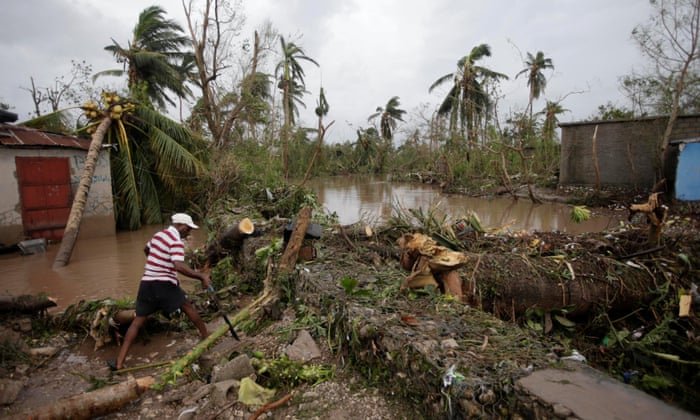
Hurricane Matthew, which smashed into Haiti with winds hitting 145mph, leaving a trail of devastation and at least 10,000 people in shelters, was on Wednesday reported to be travelling north-west and in the next two days or so about to threaten Florida, Georgia and South Carolina, probably as a very powerful category 3 hurricane.
In the US, too, in Pueblo county, southern Colorado, more than 1,500 people were evacuated on Monday as a wildfire destroyed 3,000 acres in the Beulah valley. Strong winds combined with exceptionally dry conditions caused flames to engulf seven structures in Pueblo, including a school and post office. A south-easterly wind gusting up to 50mph allowed the fire to spread rapidly.
The blaze continued Tuesday morning despite improved weather conditions with lighter winds slowing the flames. Further west, in northern California, the summer drought has caused wildfires to destroy a dozen homes and 16 other structures in Santa Cruz.
Meanwhile, Typhoon Megi continued to cause havoc across Taiwan and south-east China as it made landfall late last week. Megi’s violent winds peaked up to 130mph, causing schools to shut, grounding flights and cutting power to millions of people. Torrential rain caused two big landslides in the Zhejiang province, affecting Baofeng and Sucun villages. Homes have been destroyed and dozens of people reported missing.
More than 1.7 million residents in southern Australia experienced a complete power failure as a once-in-a-50-year storm swept across the region last week.
The intense low pressure system brought torrential rain and strong winds as well more than 80,000 lightning strikes, which caused severe damage to power generators and transmission towers. This severed interconnections with Victoria, not only plunging many buildings into darkness, but severely disrupting Adelaide’s Metro. The intense rainfall also led to flooding and there were reports of tornadoes.
No comments:
Post a Comment